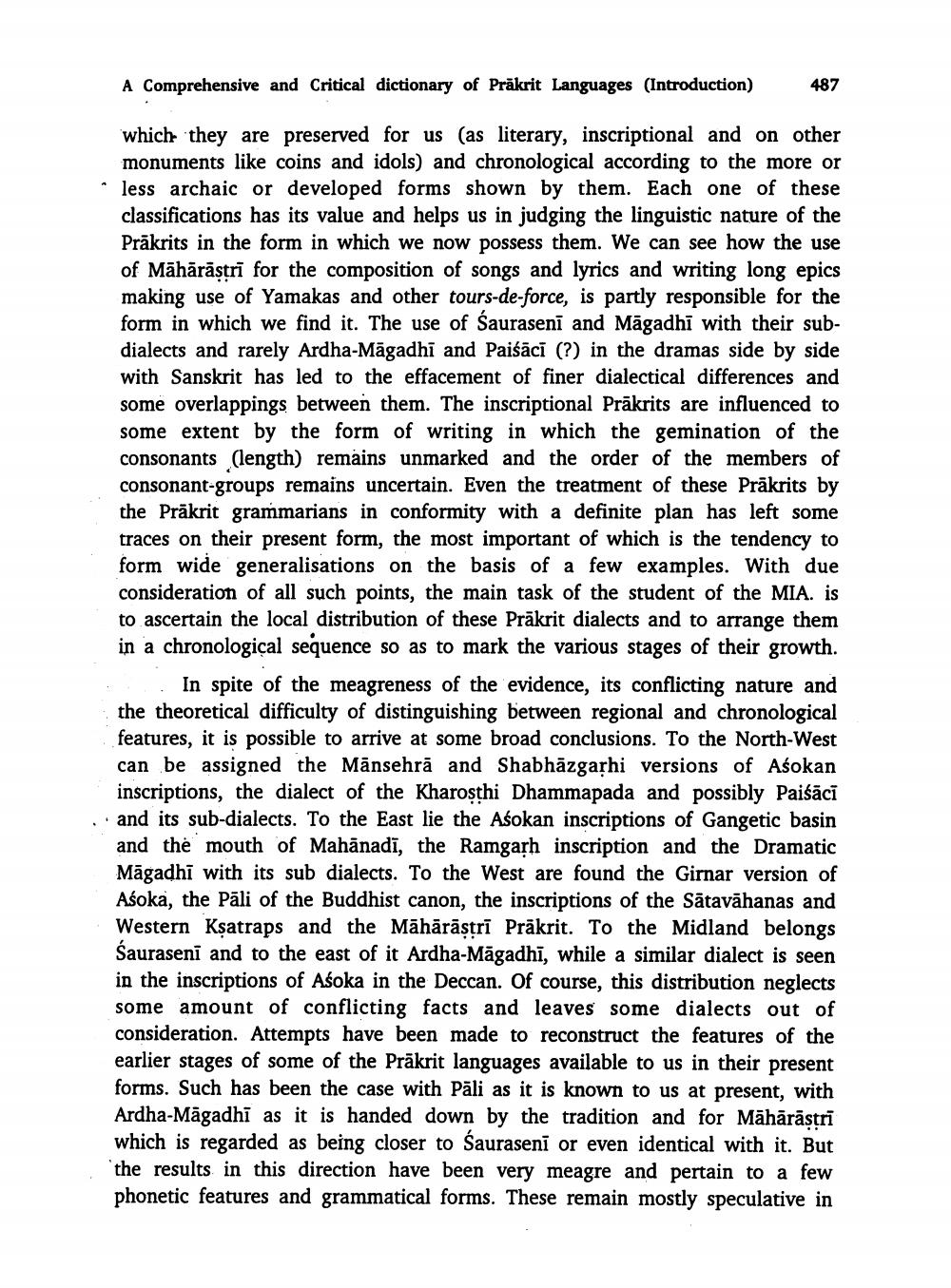________________
A Comprehensive and Critical dictionary of Prakrit Languages (Introduction)
487
which they are preserved for us (as literary, inscriptional and on other monuments like coins and idols) and chronological according to the more or less archaic or developed forms shown by them. Each one of these classifications has its value and helps us in judging the linguistic nature of the Prākrits in the form in which we now possess them. We can see how the use of Māhārāstrī for the composition of songs and lyrics and writing long epics making use of Yamakas and other tours-de-force, is partly responsible for the form in which we find it. The use of Sauraseni and Māgadhi with their subdialects and rarely Ardha-Māgadhi and Paiśāci (?) in the dramas side by side with Sanskrit has led to the effacement of finer dialectical differences and some overlappings between them. The inscriptional Prākrits are influenced to some extent by the form of writing in which the gemination of the consonants (length) remains unmarked and the order of the members of consonant-groups remains uncertain. Even the treatment of these Präkrits by the Präkrit grammarians in conformity with a definite plan has left some traces on their present form, the most important of which is the tendency to form wide generalisations on the basis of a few examples. With due consideration of all such points, the main task of the student of the MIA. is to ascertain the local distribution of these Prākrit dialects and to arrange them in a chronological sequence so as to mark the various stages of their growth.
In spite of the meagreness of the evidence, its conflicting nature and the theoretical difficulty of distinguishing between regional and chronological features, it is possible to arrive at some broad conclusions. To the North-West can be assigned the Mānsehrā and Shabhāzgarhi versions of Asokan
inscriptions, the dialect of the Kharosthi Dhammapada and possibly Paisāci .. and its sub-dialects. To the East lie the Aśokan inscriptions of Gangetic basin
and the mouth of Mahānadī, the Ramgarh inscription and the Dramatic Māgadhi with its sub dialects. To the West are found the Girnar version of Asoka, the Pāli of the Buddhist canon, the inscriptions of the Sātavāhanas and Western Kşatraps and the Māhārāstrī Prākrit. To the Midland belongs Sauraseni and to the east of it Ardha-Māgadhī, while a similar dialect is seen in the inscriptions of Asoka in the Deccan. Of course, this distribution neglects some amount of conflicting facts and leaves some dialects out of consideration. Attempts have been made to reconstruct the features of the earlier stages of some of the Prākrit languages available to us in their present forms. Such has been the case with Pāli as it is known to us at present, with Ardha-Māgadhi as it is handed down by the tradition and for Māhārāstri which is regarded as being closer to Saurasenī or even identical with it. But the results in this direction have been very meagre and pertain to a few phonetic features and grammatical forms. These remain mostly speculative in




